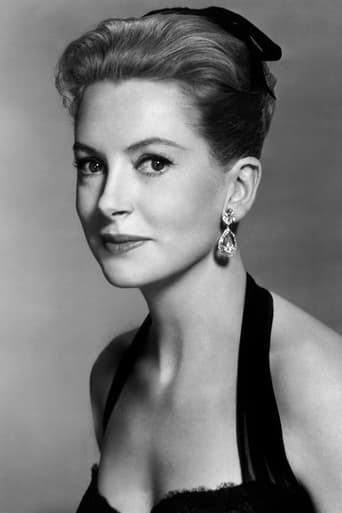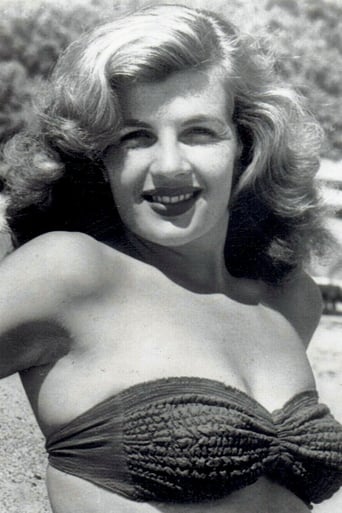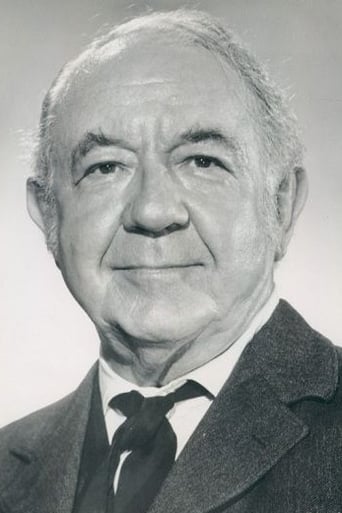Cubussoli
Very very predictable, including the post credit scene !!!
Fairaher
The film makes a home in your brain and the only cure is to see it again.
Dirtylogy
It's funny, it's tense, it features two great performances from two actors and the director expertly creates a web of odd tension where you actually don't know what is happening for the majority of the run time.
Zandra
The movie turns out to be a little better than the average. Starting from a romantic formula often seen in the cinema, it ends in the most predictable (and somewhat bland) way.
JohnHowardReid
In 1951, Charles Vidor directed a film called "Rage of the Vulture" at Paramount. Set in the first days of Indian independence (1947), the Jo Swerling screenplay (adapted by George Tabori and Frederick Hazlitt Brennan from the novel by Alan Moorehead) tells the story of a gun-runner (Alan Ladd), a blind Englishwoman (Deborah Kerr), a French adventuress (Corinne Calvet), a pacifist statesman (Charles Boyer) and a group of English residents (Cecil Kellaway, John Williams et al), who are cut off from civilization by hostile tribesmen. This film was shelved for over a year in the hope that political events in India might make fora welcome a load of free publicity. But as nothing newsworthy actually occurred -- or even seemed likely to occur within in the near future -- the picture was eventually released as Thunder in the East in January, 1953.As expected, the movie failed to attract picture-goers, even though Alan Ladd was about to enter a period of super-stardom.
Robert J. Maxwell
Let's see. It's 1947 in India, and 1951 in Hollywood. Different time zones. The British troops have left India, and Gandahar state is under the leadership of a not entirely unbelievable Indian maharaja named Charles Boyer. Gandahar is surrounded by brigands who are about to attack. Alan Ladd, a brash entrepreneur, lands an airplane full of guns at Gandahar and offers to sell them to Boyer, but Boyer is a disciple of Mahatma Gandhi, who eschewed violence in all its forms. Boyer's principles are to be admired but he turns out to be wrong about the guns.So what is the message behind the rhetoric? Americans, the Commies are a threat to our democracy and nobody should be SOFT ON COMMUNISM. Sometimes war is the only answer.What we see is a crowded stage-bound Gandahar. Ladd bumps into the blind Deborah Kerr, or the other way round, and they dance in an Indian night club where the sitar sounds exactly like a guitar, to a melody blending romance and mystery that sounds exactly as if it were written for this movie by Hugo Friedhofer.Ladd is more animated than usual, though the role of money-grabbing rogue changing to a selfless hero is pretty much a cliché. Deborah Kerr is more interesting. She's very attractive and has a slight quaver in her voice that suggests uncertainty, politesse, and femininity. She's prim, a little wall eyes, and quite appealing. Boyer is actually passable as an Indian leader, except that his French accent turns "Bombay" into "Pompeii." There is, unfortunately, one of those colorful and mischievous native boys who latches on to Ladd and provides the dispensable cuteness.It has its longueurs but the tension in the plot increases as the threat from bandits is realized. For some reason, the movie ends in the middle of a shoot out and although both Boyer and Ladd advance with smiles, guns blazing, the end is problematic. Nice shots of a Lockheed Vega and a Grumman TBF.
bkoganbing
Paramount must have had some trepidations about Thunder in the East as it was made in 1949 and held up in release for three years. Nat King Cole recorded the theme from Thunder in the East, a song called The Ruby and the Pearl three years earlier. It's quite a beautiful ballad and perfectly suited for Cole's voice, it's the best thing to come out of this routine action film.Alan Ladd plays an arms dealer selling weaponry for the best price he can exact from the various sides in the Indian Civil War where the boundaries of India and Pakistan were settled in a lot of blood spilled. He's in Ghandahar province which has its rebel Moslem faction. He falls for Deborah Kerr the blind daughter of missionary Cecil Kellaway.Ladd's got a silly playboy maharajah in Charles Lung to deal with and a prime minister for Ghandahar who is a disciple of Gandhi's non-violence philosophy. Charles Boyer as the prime minister doesn't want the weapons, but the rebel Moslems want them if for no other reason than to keep them out of Hindu hands and if they can't buy them, they'll take them by whatever means necessary.The film tries to be a critique of Gandhi's non-violence code, but it doesn't rise above being an action/adventure story. The ending is a rather abrupt one and unconvincing. Still fans of the star players will probably like it.
dbdumonteil
I guess the 1952 audience was certainly not satisfied with the ending,which abruptly comes as the heroes are still in action. Ending a movie like that was not obvious at the time.The biggest flaw is French actor Charles Boyer,ridiculously made up as a Hindu.This character,a Gandhi disciple, puts forward wisdom,prayers,peace and love to cowardice and reactionary mind (the English) greed(Alan Ladd's character) , violence (his brothers ,the rebels),and complete irresponsibility (the caricature of a maharajah).He's the only positive character of the story along with the minister and his blind niece (Kerr).It's absolutely impossible to believe Boyer is an Indian ,mainly if you've seen him as a French lover!Besides,he finally demonstrates the opposite of what he stood up for . Ladd's evolution is predictable,from a greedy businessman to a hero (thanks to the blind girl of course).One should notice that Deborah Kerr is too great an actress to play such a poor part that would be suitable for a B movie starlet.Her intellectual playing does not match with down-to-earth Alan Ladd.The movie also suffers from a shoestring budget.Take George Cukor's "Bhowani junction"(1956) instead.





